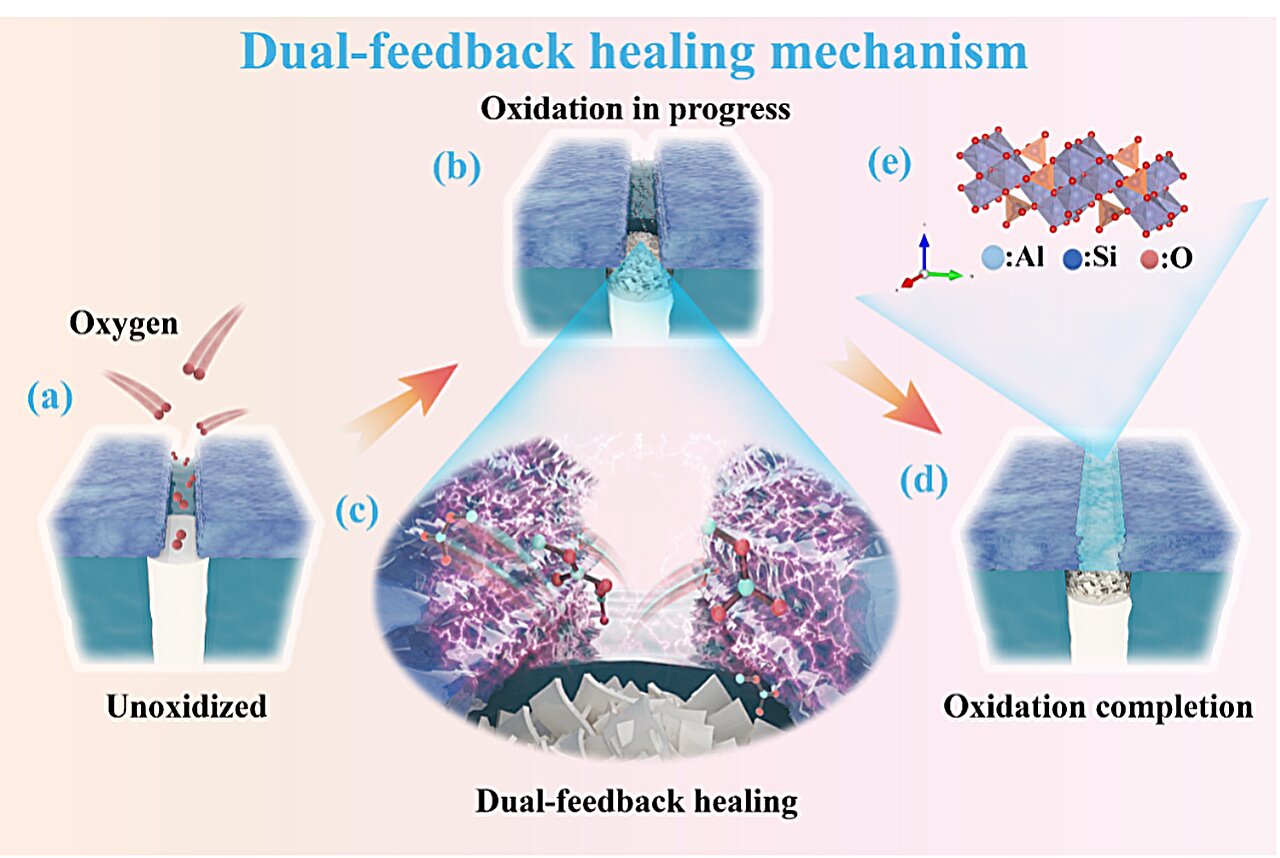Fiber-reinforced ceramic matrix composites (CMCs) have been the primary choice for radome materials in hypersonic vehicles due to their high toughness, strength, and other advantageous properties. However, oxidation by oxygen in the atmospheric environment at elevated temperatures remains a significant obstacle to their further development.
Thermal protection coatings offer a crucial avenue to mitigate this issue. Nonetheless, inherent material differences or fiber orientations within CMCs can lead to disparate thermal expansion rates between the matrix and fibers during temperature variations, inevitably generating internal stresses. These internal stresses, ironically, contribute to the cracking and even detachment of coatings, posing a challenge to their effectiveness.
“The way of the Tao moves through opposition; its function is found in what is weak.” Inspired by the wisdom of ancient philosophers, Professor Xia Long from the Key Laboratory of Special Ceramic Design and Preparation at Harbin Institute of Technology (Weihai) has proposed a conceptual framework rooted in reverse thinking to address this issue, attempting to achieve a higher “return” through a minimal “sacrifice.”
Recognizing the inherent difficulty in preventing coating cracks, the team suggests harnessing oxidation at the crack sites, where the resulting oxide products can chemically or physically interact with the oxidation-resistant coating to reduce material viscosity. This targeted self-healing of thermally mismatched cracks is named the “Dual-feedback self-healing mechanism.”
The team published their work in Journal of Advanced Ceramics on September 5, 2024.
In the article, the SOAC@BNf/SiBN composite material was fabricated to validate the proposed design. The SOAC layer was produced using a multi-step spray coating process. The organic-to-inorganic transformation process of SOAC was examined across various sintering temperatures, confirming that no crystalline structures were formed during the transition from the organic coating to the inorganic coating. This finding underscores the notable advantage of the coating in effectively adhering to the substrate surface.
Validation through oxidation tests on BNf/SiBN ceramics revealed that the BNf/SiBN composite initiates gradual oxidation near 1100°C. During this process, the generated B2O3 vapor, upon escape, reacts with SiO2 in the Si-O-Al system to form SiO2-B2O3 glassy phase. This reduces the viscosity of the oxidation-resistant coating, enabling it to spontaneously flow and fill defects, thus sealing off oxygen penetration pathways. Consequently, the coating effectively safeguards the substrate at elevated temperatures.
Thermal analysis results demonstrate a significant reduction in the high-temperature oxidation weight loss rate of the Si-O-Al@BNf/SiBN material system, from 11% to 2.4%. This is attributed to the dual-feedback self-healing mechanism, which safeguards the structural integrity and preserves the mechanical properties of the material in high-temperature environments.
However, further meticulous research is necessary to delve into the theoretical feasibility of the dual-feedback self-healing mechanism. Xia also suggests that future endeavors may explore materials with enhanced chemical or physical interactions between the matrix oxidation products and protective coatings, aiming to improve the high-temperature oxidation resistance of fiber composites.
Other contributing authors include Yuanshuai Wang, Xinyu Wang, Pianpian Zhang, Anqi Lun, Yuewei Li, Yi Wang, Lizhe Xing, Zhengyang Fu, and Ya’nan Yang.
More information:
Yuanshuai Wang et al, Dual-feedback healing mechanism redefining anti-oxidation coatings in fiber reinforced composites, Journal of Advanced Ceramics (2024). DOI: 10.26599/JAC.2024.9220966
Provided by
Tsinghua University Press
Citation:
Dual-feedback mechanism can enhance anti-oxidation coatings in fiber composites (2024, September 12)
retrieved 13 September 2024
from https://phys.org/news/2024-09-dual-feedback-mechanism-anti-oxidation.html
This document is subject to copyright. Apart from any fair dealing for the purpose of private study or research, no
part may be reproduced without the written permission. The content is provided for information purposes only.

